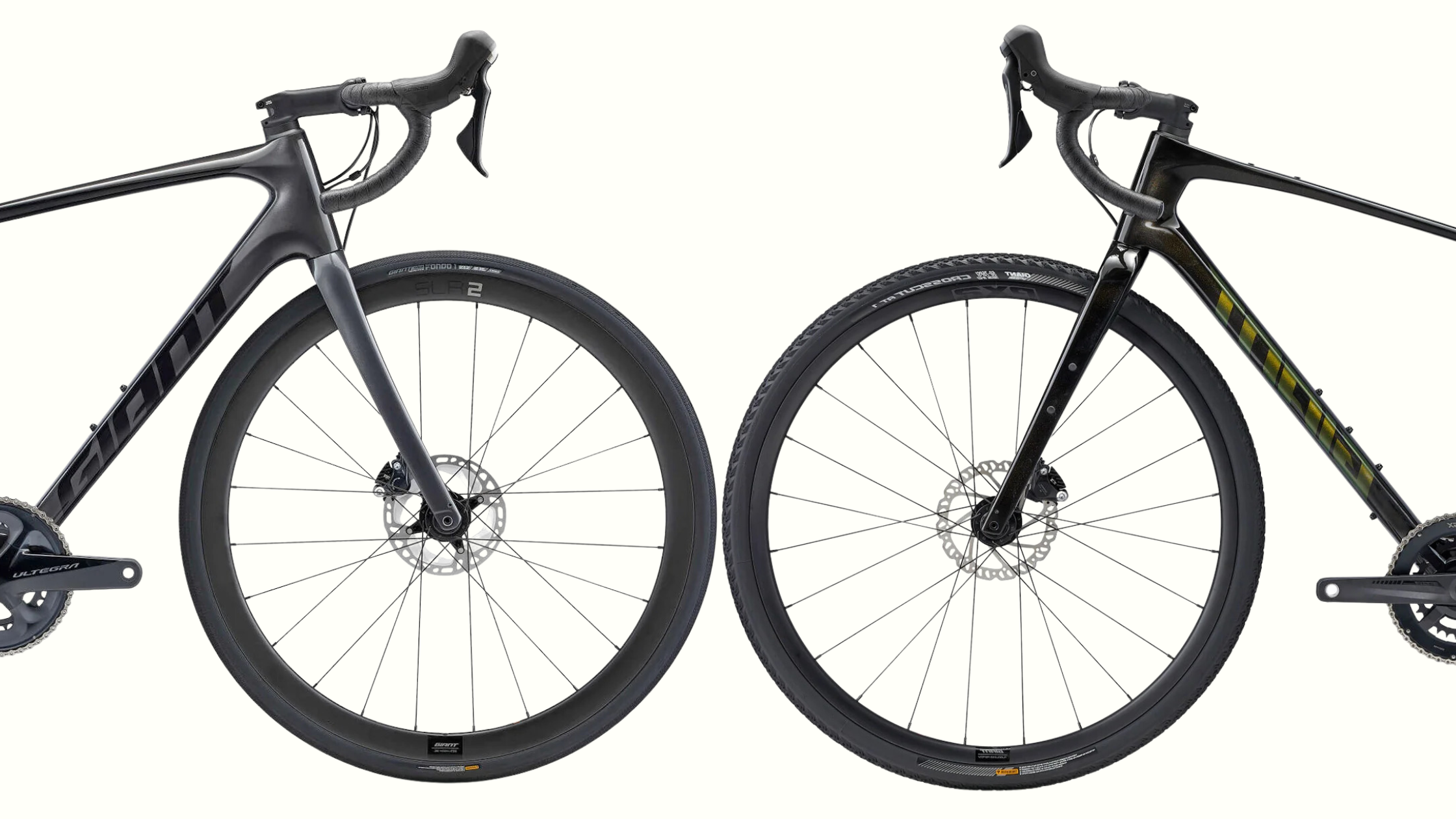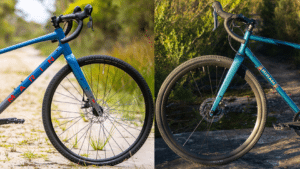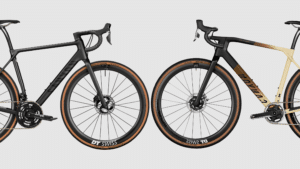Updated 29th August
The Giant bike battle! Which bike is best? Their gravel grinder or endurance road machine?
We are going to compare these two iconic bikes side by side and see what the difference is between each. While there’s a massive difference between the type of bikes these are, understanding which one fits your riding goals is crucial for making the right choice.
Quick Answer Box (Save Time Reading)
Giant Defy or Giant Revolt?
Quick Recommendation:
- Giant Revolt seems better suited for adventure cycling, bikepacking, and mixed-terrain riding with its 53mm tire clearance and gravel-focused geometry
- Giant Defy is an endurance road bike suited for long-distance road riding, climbing, and pavement-focused adventures with superior speed on tarmac
Our Decisive Verdict
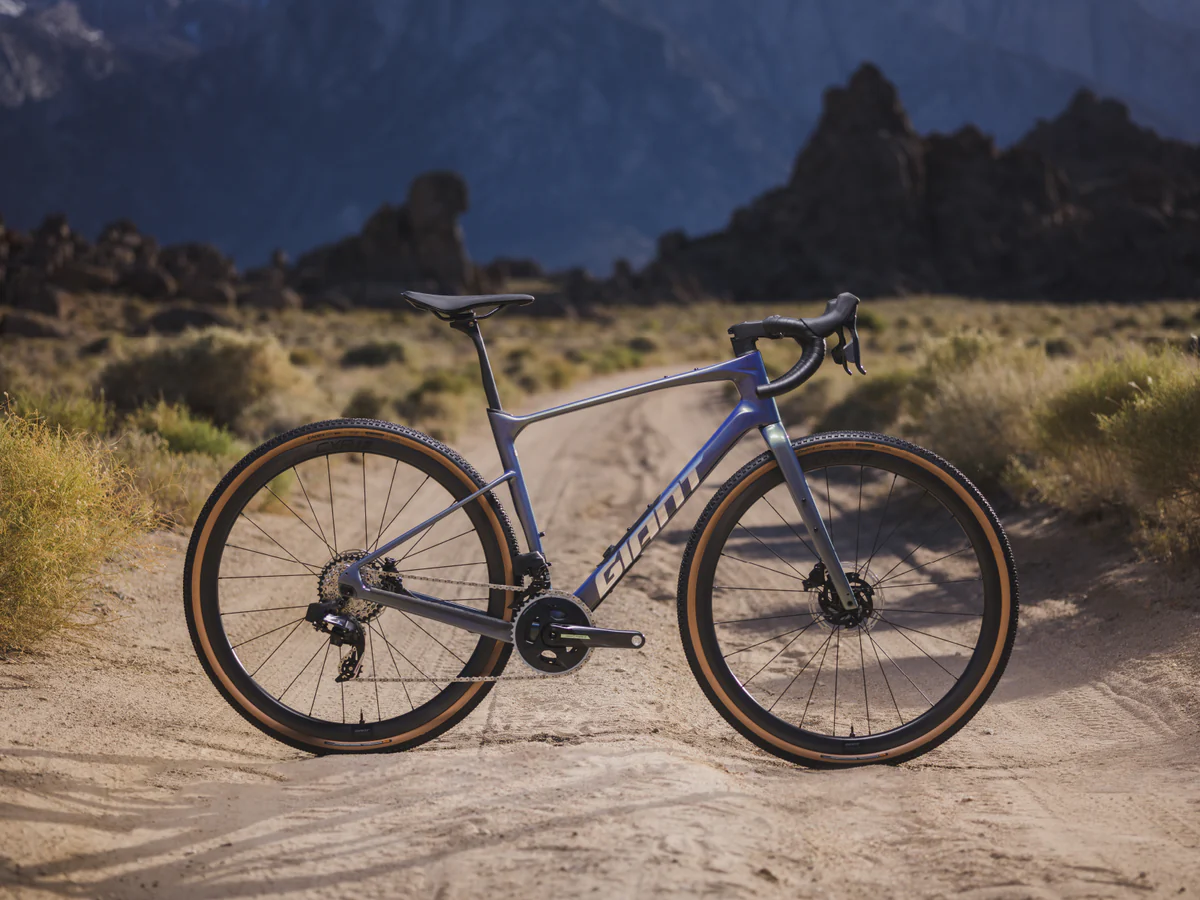
The Giant Revolt is the superior choice compared to the Giant Defy for most modern cyclists. That tire clearance and versatility makes all the difference! With the ability to run up to 53mm tires compared to the Defy’s maximum 40mm, it’s a significant difference in terrain capabilities and riding opportunities.
If you are coming from a road cycling background and looking for a bike that can handle everything from smooth tarmac to rough gravel, the Revolt is your go-to. It’s essentially a road bike with fat tires and adventure-ready geometry – if you want one bike that can tackle any terrain, the Revolt has your back.
The Defy isn’t particularly specialized except as a dedicated endurance road machine. It excels at long road rides and climbing but lacks the versatility that modern cyclists demand.
However, if you intend to focus purely on road riding, club rides, and want the fastest option on pavement, the Defy’s lighter weight and road-specific geometry make it more adeptly tailored for pure speed demands.
Key Takeaways
Giant Revolt Advantages:
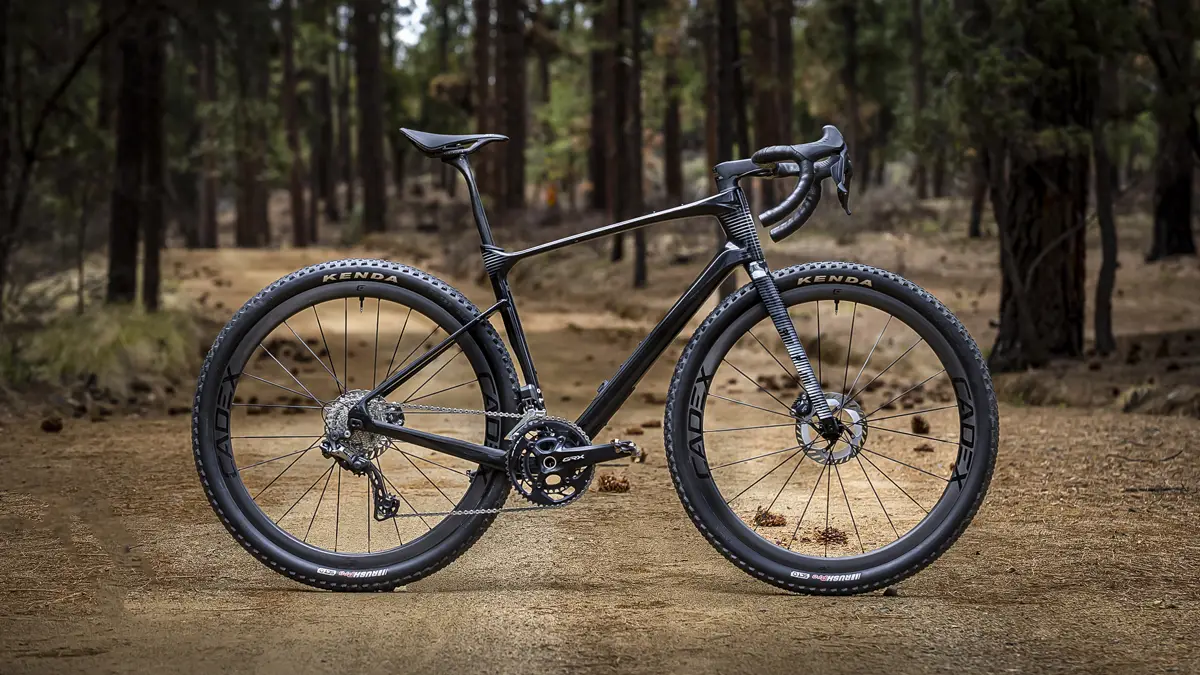
- Massive tire clearance (up to 53mm) for superior traction and comfort
- Flip chip dropout system for wheelbase adjustment
- Adventure-ready geometry with mounting points for bikepacking
- More upright, comfortable riding position for long adventures
- Better climbing gears (lower gearing options available)
- Dropper post compatibility on Advanced models
- Internal down tube storage compartment
Giant Defy Advantages:
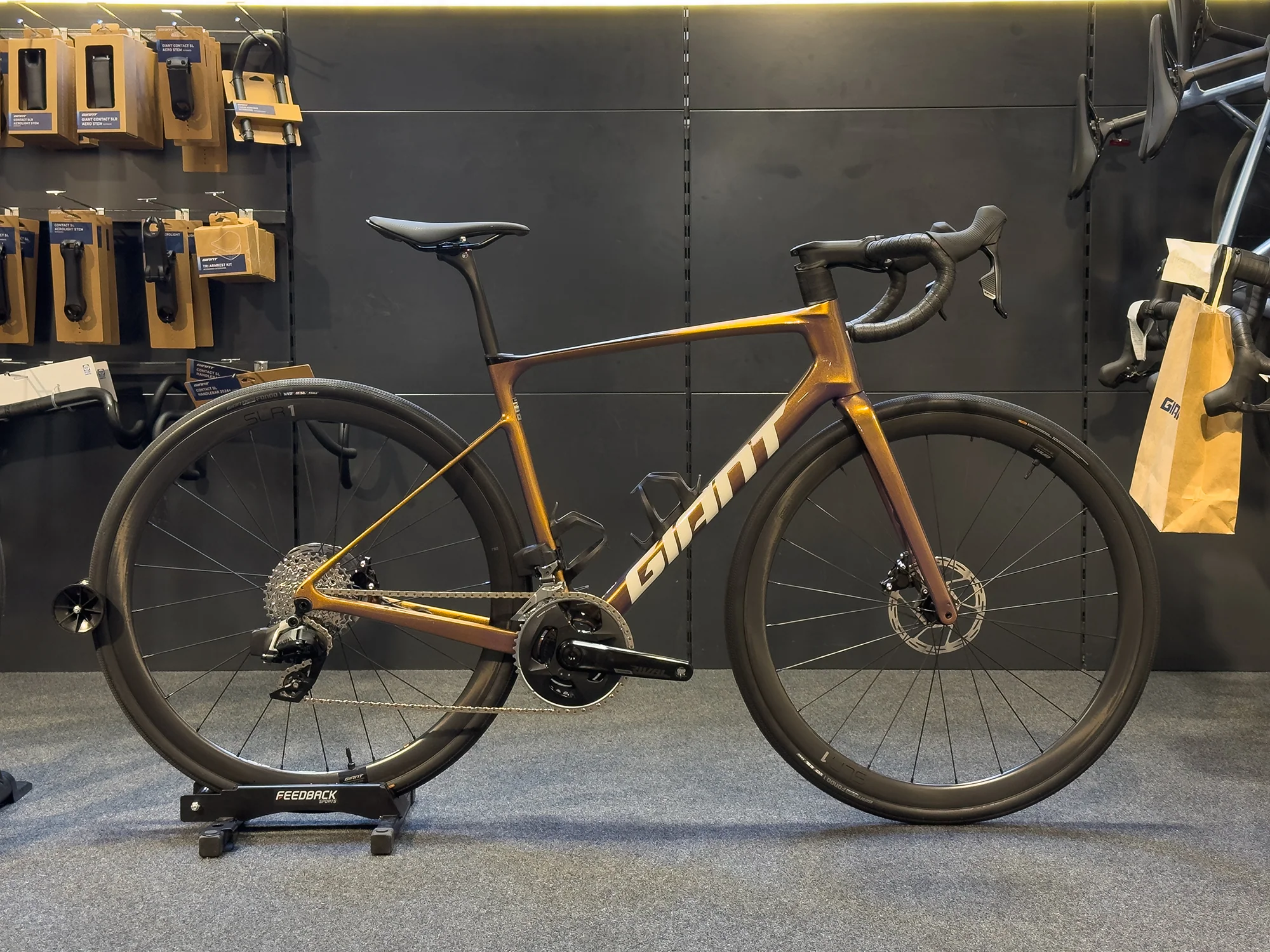
- Lighter overall weight (approximately 1.2-2kg lighter depending on model)
- Faster on smooth pavement due to aerodynamic positioning
- More aggressive geometry for efficient power transfer
- Superior component specs at similar price points
- Better top-end gearing for high-speed descents
- Proven endurance road geometry for century rides
Head-to-Head Spec Comparison
| Specification | Giant Revolt | Giant Defy |
|---|---|---|
| Price Range | $1,400 – $4,500 | $3,300 – $13,000 |
| Weight | 18.6–19.3 lbs | 8.8 kg (19.4 lb est.) |
| Frame Material | Aluminum / Carbon | Carbon |
| Tire Clearance | 700c × 53mm | 700c × 40mm |
| Wheelbase | 1,035mm | 1,010mm |
| Stack/Reach Ratio | 1.54:1 | 1.50:1 |
| Chainstay Length | 425–430mm | 420mm |
| Trail | 65mm | 59mm |
| Standover Height | 774mm | 796mm |
| Drivetrain Options | 1×12, 2×9, 2×10, 2×12 | 2×12 |
Prices may vary by region and retailer
What Kind of Bike Is Each?
What kind of bike is the Giant Revolt?
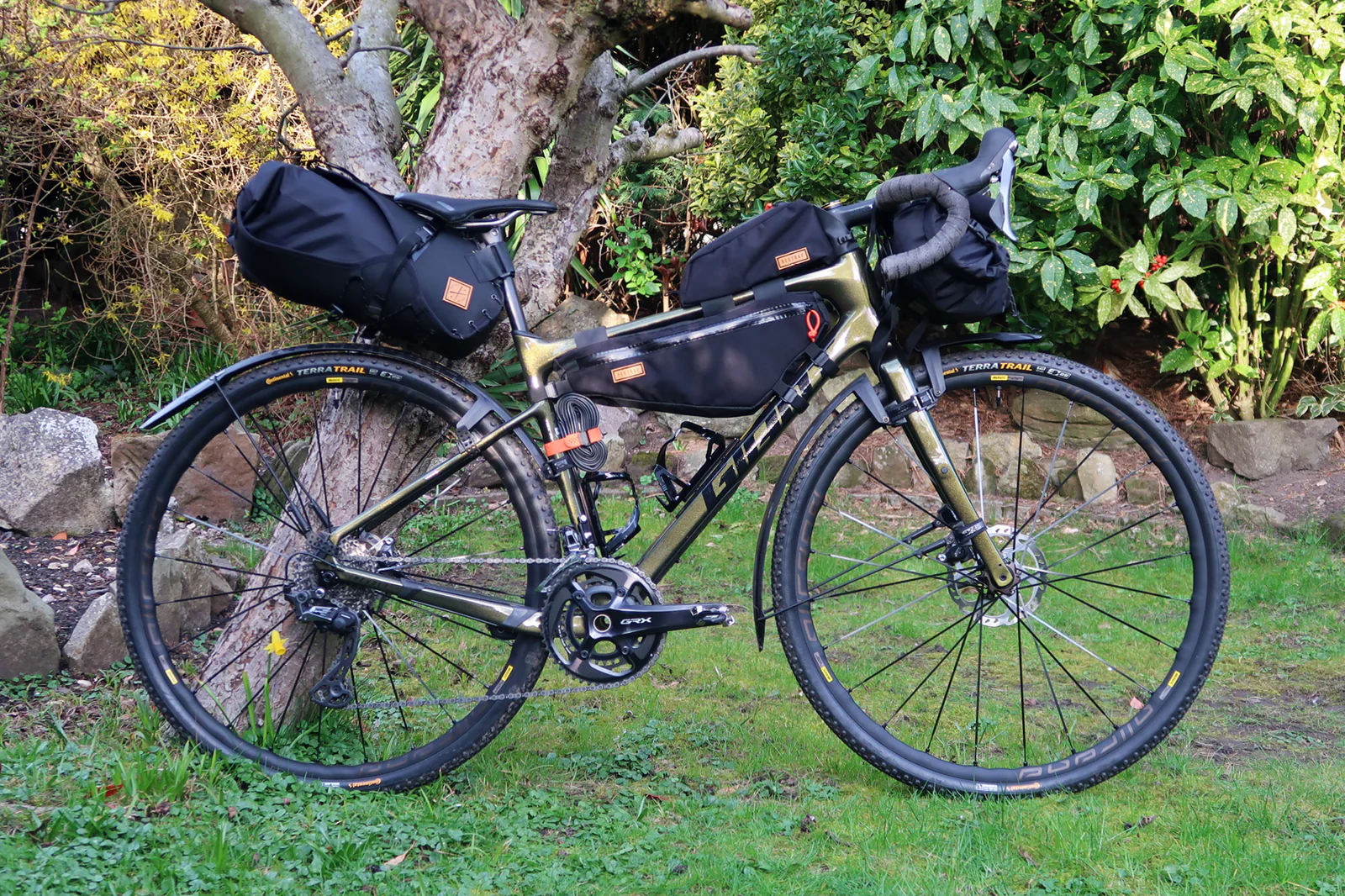
The Revolt is a modern adventure machine designed for the rider who refuses to be limited by terrain. It’s a gravel bike with endurance road DNA, featuring the compliance needed for all-day comfort and the capability to tackle everything from smooth pavement to chunky gravel. This is the bike for the explorer who wants to venture beyond the beaten path while maintaining road bike efficiency. With its flip chip dropout system and massive tire clearance, it’s ready for whatever adventure you can dream up.
What kind of bike is the Giant Defy?

The Defy is a purpose-built endurance road machine for the purist who believes the best adventures happen on tarmac. It’s designed for the rider who wants to climb higher mountains, ride longer distances, and tackle challenging road routes with efficiency and comfort. This is the bike for gran fondos, century rides, and long climbing days where aerodynamics and weight savings matter more than tire clearance.
Geometry Deep Dive
Why Geometry Matters: Geometry can play a big part in the difference between how a bike rides and feels. It is something to consider when buying a bike.
Giant Revolt Geometry Analysis The Revolt features a more upright riding position (1.54:1 stack/reach ratio) designed for all-day comfort on varied terrain. The longer wheelbase (1,035mm) and increased trail (65mm) provide stability when loaded with gear or navigating rough surfaces. The longer chainstays (425-430mm) offer a planted feel, especially important when climbing steep grades with panniers or bikepacking gear.
Giant Defy Geometry Analysis
The Defy boasts a slightly more aggressive position (1.50:1 stack/reach ratio) optimized for efficient power transfer on road surfaces. The shorter wheelbase (1,010mm) and reduced trail (59mm) create quicker, more responsive handling ideal for group rides and climbing. The shorter chainstays (420mm) contribute to a lively, efficient feel that road cyclists appreciate.
Complete Geometry Comparison All measurements for MD/LG frames!
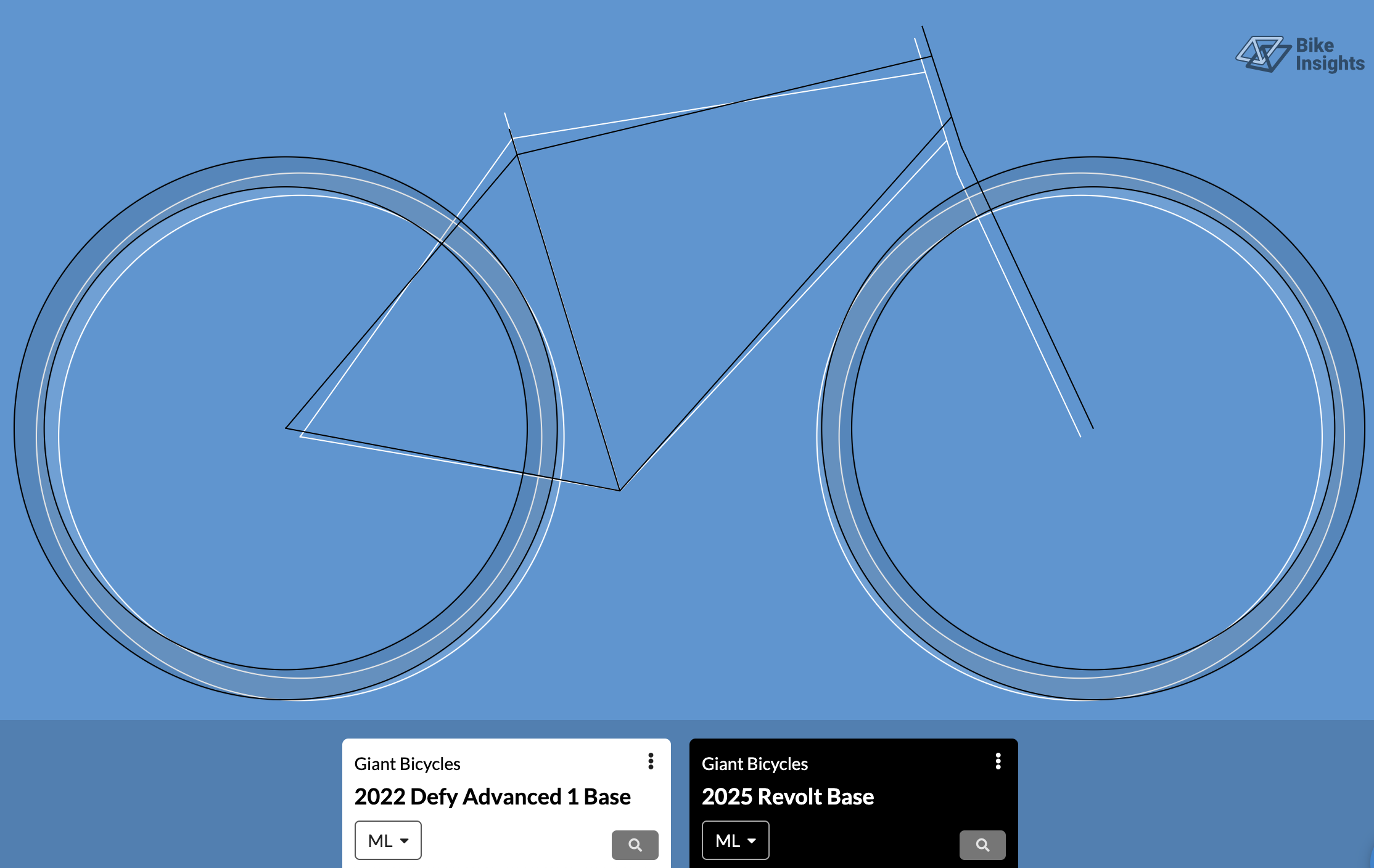
| Measurement | Giant Revolt | Giant Defy | Difference |
|---|---|---|---|
| Stack | 602mm | 577mm | +25mm |
| Reach | 391mm | 384mm | +7mm |
| Top Tube Length | 575mm | 560mm | +15mm |
| Head Tube Angle | 72.0° | 72.5° | -0.5° |
| Seat Tube Angle | 73.0° | 73.0° | 0° |
| Head Tube Length | 165mm | 175mm | -10mm |
| BB Drop | 80mm | 70mm | +10mm |
| Chainstay Length | 425mm | 420mm | +5mm |
| Wheelbase | 1,031mm | 1,010mm | +21mm |
| Trail | 65mm | 59mm | +6mm |
| Standover Height | 774mm | 796mm | -22mm |
Detailed Bike Analysis
Giant Revolt Deep Dive
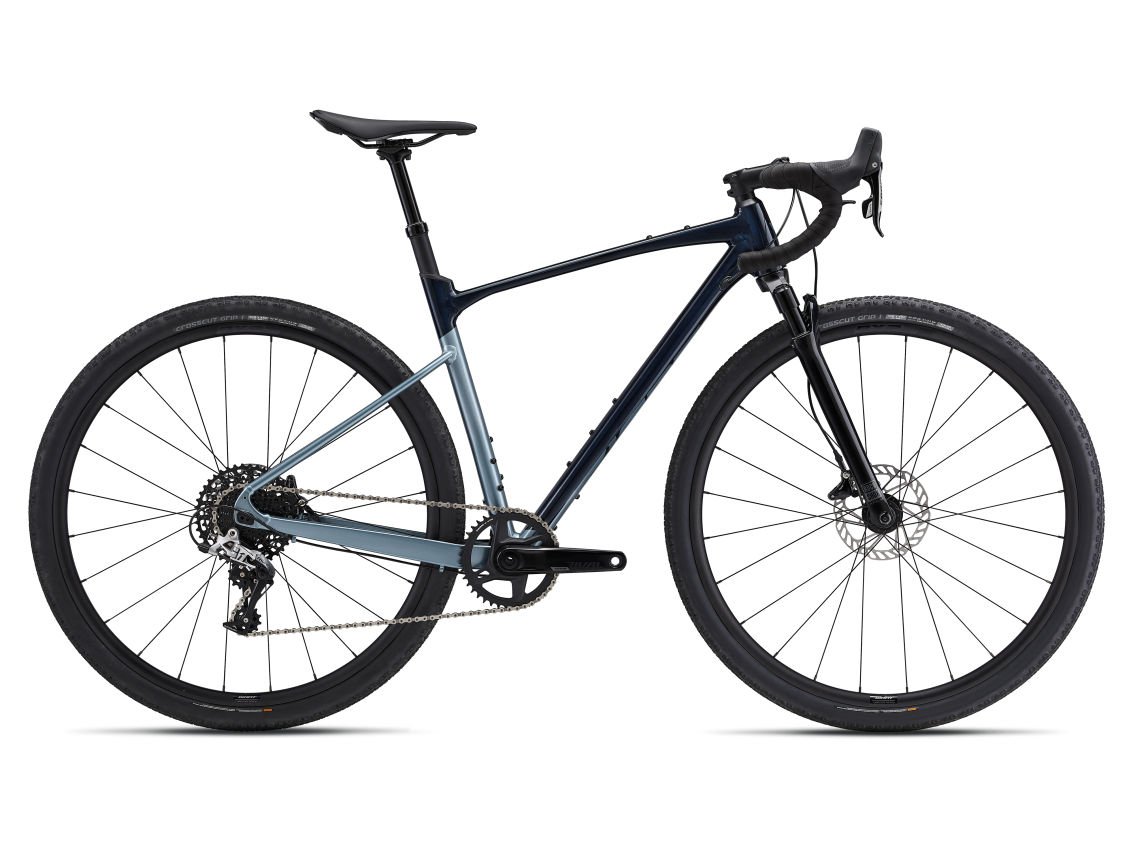
✅ Pros
- Exceptional tire clearance up to 53mm allows for maximum traction and comfort across all terrain types
- Flip chip dropout system provides wheelbase adjustment for different riding styles and tire sizes
- Comprehensive mounting points for bottles, racks, and fenders make it bikepacking-ready
- D-Fuse seatpost and handlebar technology absorbs road vibrations effectively
- Lower standover height makes mounting and dismounting easier
- Dropper post compatibility on Advanced models enhances descending confidence
- Internal down tube storage keeps essentials secure and accessible
❌ Cons
- Heavier than dedicated road bikes, impacting climbing speed on paved surfaces
- More upright position creates additional wind resistance at high speeds
- Higher price point for carbon models compared to some competitors
- Longer wheelbase can feel less nimble in tight, technical situations
Component Highlights The Revolt Advanced models feature SRAM Rival eTap AXS wireless shifting and Giant’s proprietary D-Fuse technology. The carbon models utilize Advanced-grade composite frames with full cable integration for a clean aesthetic. The flip chip dropout system is genuinely innovative, allowing riders to adjust their bike’s personality based on conditions and preferences.
Use Case Analysis
Giant Revolt for Bikepacking The Revolt excels in bikepacking applications with its stable geometry, mounting points, and tire clearance. The longer chainstays and wheelbase provide confidence when loaded with gear, while the wide tire clearance allows for maximum traction on varied surfaces. The internal storage compartment is perfect for tools and snacks.
Giant Revolt for Commuting As a commuter, the Revolt offers the perfect blend of speed and practicality. The upright position provides excellent visibility in traffic, while the wide tire clearance handles urban obstacles like potholes and debris. Fender compatibility keeps you dry, and the multiple mounting points accommodate lights and cargo.
Giant Defy Deep Dive
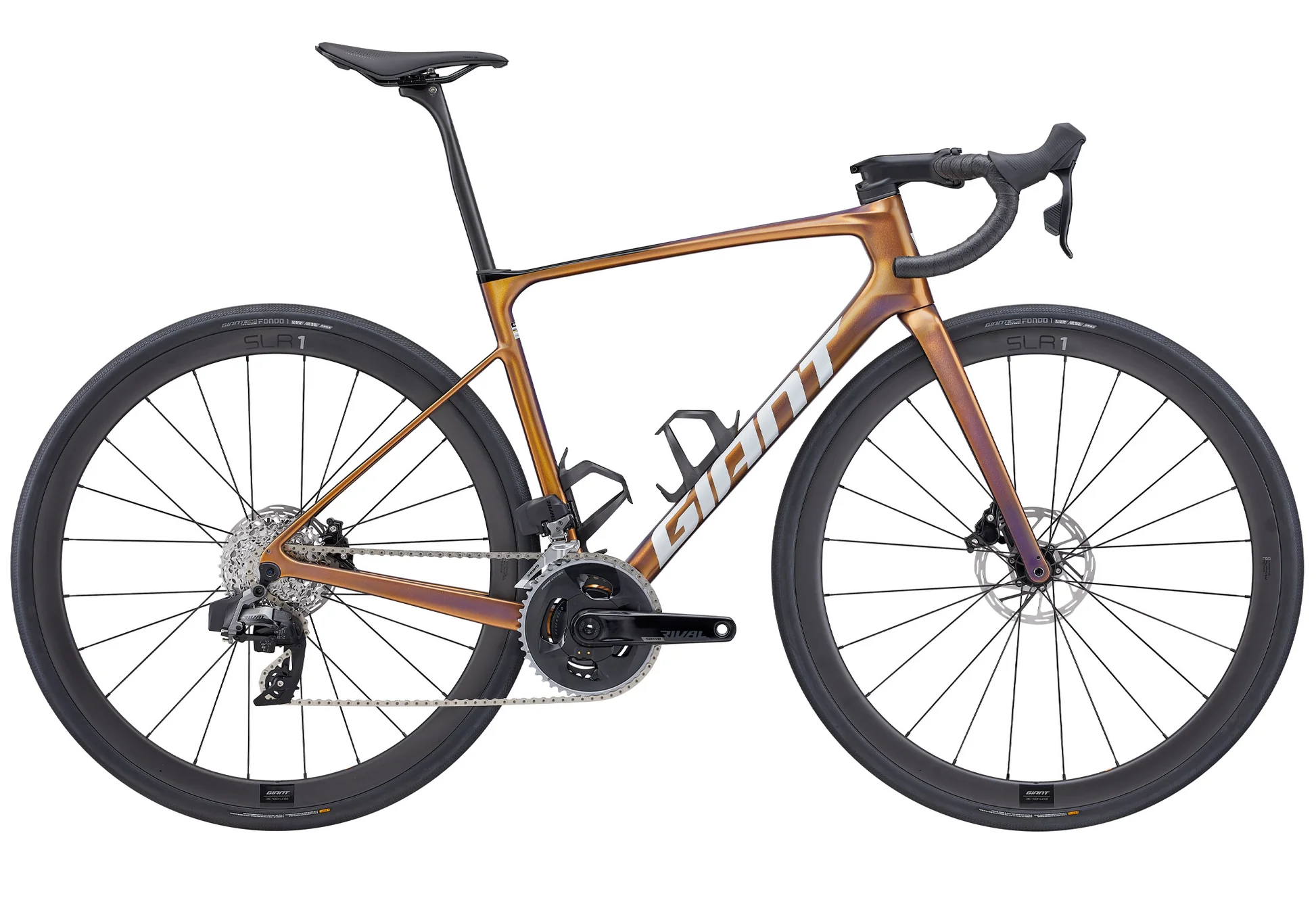
✅ Pros
- Lighter overall weight translates to superior climbing performance on paved surfaces
- More aggressive geometry optimizes power transfer efficiency for road riding
- Proven endurance road design has been refined over years for long-distance comfort
- Superior component specifications at comparable price points
- Aerodynamic frame design reduces drag at higher speeds
- Wider range of models and price points available
❌ Cons
- Limited tire clearance (40mm maximum) restricts terrain options significantly
- Lacks the mounting points and versatility for adventure riding
- Higher standover height may be challenging for shorter riders
- More aggressive position can become uncomfortable on very long rides
- No dropper post compatibility limits descending confidence on mixed terrain
Component Highlights The Defy Advanced models feature Shimano’s latest groupsets, including 105 Di2 and Ultegra Di2 options with electronic shifting. Giant’s D-Fuse seatpost and handlebar technology provides compliance without sacrificing efficiency. The carbon frame construction uses Advanced-grade composite with internal cable routing for aerodynamic benefits.
Use Case Analysis
Giant Defy for Road Racing/Group Rides The Defy’s lighter weight and road-specific geometry make it ideal for competitive situations. The efficient power transfer and aerodynamic positioning help maintain high speeds during group rides, while the endurance geometry prevents fatigue during long training sessions.
Giant Defy for Century Rides For pure road endurance events, the Defy’s proven geometry balances efficiency with comfort. The D-Fuse technology absorbs road vibrations over long distances, while the optimized fit positions allow sustained power output without excessive fatigue.
Your Questions Answered
Is Giant Defy a good road bike? The Giant Defy is an excellent endurance road bike featuring a lightweight composite frame designed to help you “ride stronger and longer”. Its proven geometry balances comfort and performance for long-distance road riding, making it ideal for cyclists who prioritize pavement efficiency and climbing performance.
Is the Giant Revolt a good bike? According to professional reviews, the Revolt Advanced Pro 0 is described as “one of the most comfortable gravel bikes” available, offering excellent value when compared to similarly priced competitors. Its versatile design makes it suitable for everything from gravel racing to bikepacking adventures.
Can a Giant Revolt be used as a road bike? Absolutely! The Revolt can function effectively as a road bike, especially with narrower tires installed. While it’s heavier than dedicated road bikes, its endurance geometry and D-Fuse technology provide comfort for long road rides. However, pure road bikes like the Defy will be more efficient on pavement.
What is the difference between the Giant Revolt models? The 2025 Revolt lineup ranges from the aluminum Revolt 2 at $1,400 to the carbon Advanced Pro models up to $4,500, with varying component specifications. Key differences include frame materials (aluminum vs. carbon), groupset levels (Sora to SRAM Rival AXS), and features like dropper posts on higher-end models.
Is the Giant Defy a fast bike? The Defy prioritizes endurance over pure speed, but its lightweight carbon construction and efficient geometry make it reasonably fast on road surfaces. Features like the aerodynamic D-Fuse handlebar design and optimized rim depths help maintain speed in various conditions.
Alternative Options
Giant Revolt Alternatives If you like the Revolt concept but want other options:
- Specialized Diverge – Similar comfort focus with Future Shock suspension
- Trek Checkpoint – Comparable adventure geometry with IsoSpeed decoupler
- Canyon Grail – Aerodynamic gravel design with unique cockpit
Giant Defy Alternatives If you’re drawn to the Defy but want to explore:
- Specialized Roubaix – Future Shock suspension for added comfort
- Trek Domane – IsoSpeed decoupler technology for compliance
- Canyon Endurace – German engineering with similar endurance focus
Still Deciding? Get Personal Help
Still deciding between bikes like Sami?
Choosing the right bike can be overwhelming – but it doesn’t have to be.
Join the Bike Buyers Masterclass
A 2-hour step-by-step guide that helps you confidently choose your perfect adventure bike, just like Sami did.
Explore More
Simplify specs. Avoid costly mistakes. Get support from 3,000+ others. Plus: Win up to $500 in gear, score exclusive discounts, and join our private community.
Frequently Asked Questions
What type of bike is a Giant Defy? The Giant Defy is an endurance road bike designed for long-distance pavement riding. It features lightweight carbon construction, comfortable geometry, and road-specific components optimized for efficiency and comfort on tarmac surfaces.
Is Giant Defy a good bike? Yes, the Giant Defy is an excellent choice for endurance road cycling. Its proven geometry, quality construction, and component specifications make it ideal for riders who prioritize long-distance comfort and climbing efficiency on paved roads.
Is the Giant Defy a fast bike? While the Defy prioritizes comfort over pure speed, its lightweight carbon frame and efficient geometry make it reasonably fast for an endurance bike. It’s designed for sustained speeds over long distances rather than sprint performance.
What is the difference between Giant Revolt models? The 2025 Revolt lineup includes aluminum and carbon options ranging from $1,400 to $4,500. Differences include frame materials, component levels (Sora to SRAM Rival AXS), dropper post availability, and advanced features like internal storage compartments.
Can you use a Giant Revolt for road cycling? Yes, the Giant Revolt works well for road cycling, especially with narrower tires. While heavier than dedicated road bikes, its comfortable geometry and smooth ride quality make it suitable for long road rides and mixed-surface adventures.
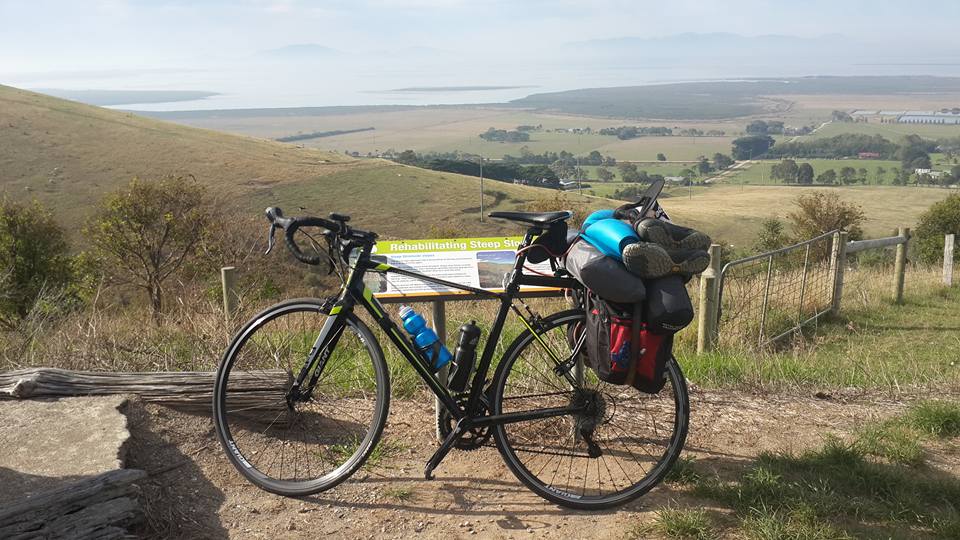
Which Giant bike is better for bikepacking? The Giant Revolt is significantly better for bikepacking due to its extensive mounting points, larger tire clearance, stable geometry when loaded, and features like internal frame storage and dropper post compatibility on Advanced models.
This comparison is based on 2025-2026 model specifications and current market pricing. Always test ride both bikes before making your final decision, as personal fit and preferences play crucial roles in bike selection.
Again to conclude both these bikes are great choices for their respected discipline. If you need solely a road bike the Defy is a great option, And to be honest I have even used this bike for my first-ever bike tour. But I wouldn’t recommend it.
Especially since Giant came out with the revolt! A gravel bike built for adventure, along with a dropper post and adventure-inspired geometry you get a bike that you can comfortably ride for longer periods of time with all your camping gear.

